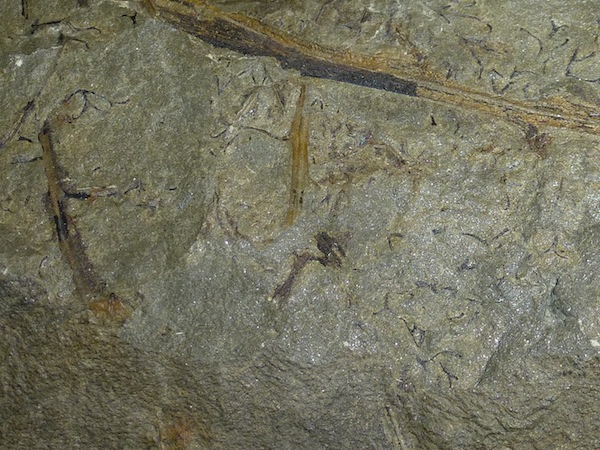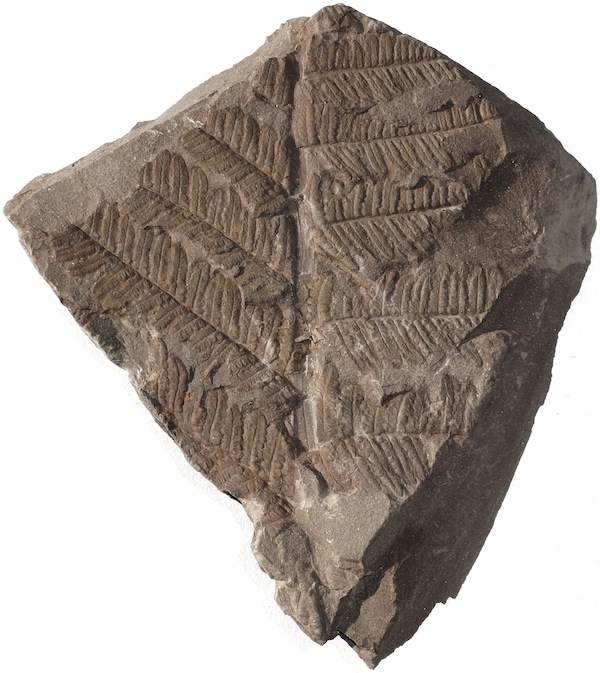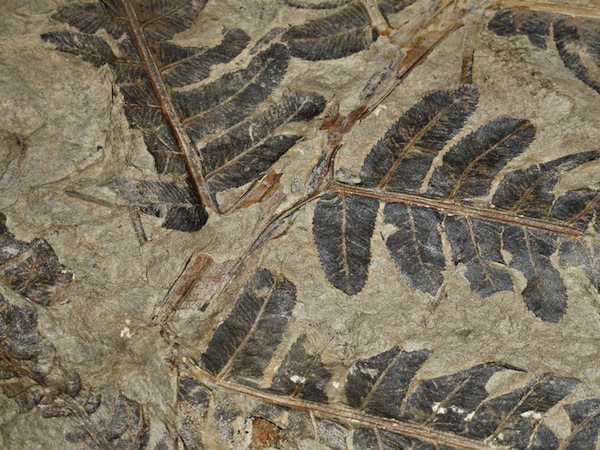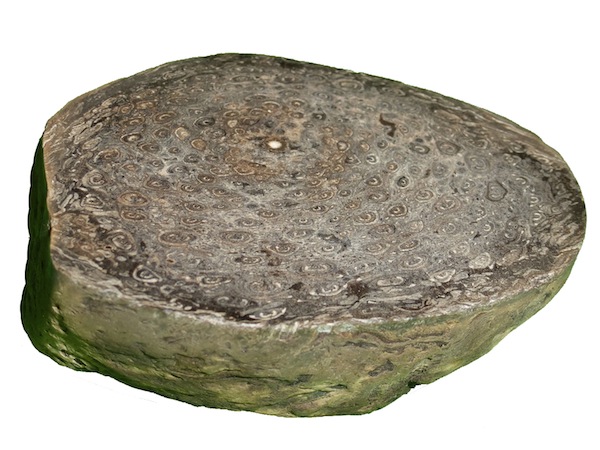Pteridophyta
Na de bloemplanten vormen de Pteridophyta, oftewel varenachtigen, de grootste en meest diverse groep vaatplanten. Varens zijn net als de mossen en lycophyten sporenplanten, maar verschillen van deze groepen in dat varens echte “bladeren” (megaphylls genoemd) hebben. Deze veren of bladen zijn meestal veervormig en wijken qua structuur en opbouw af van de bladeren van zaadplanten. Varens vertonen een grote variatie aan groeivormen. Sommige kruidachtige soorten staan op zichzelf (bijv. Matteuccia struthiopteris), terwijl anderen een kruipend rhizoom hebben en zo grote gebieden kunnen bedekken (bijv. Polypodium vulgare). Daarnaast zijn er ook boomvormige varens (bijv. Cyathea cooperi).
Een van de manieren waarop moderne varens kunnen worden onderverdeeld is op basis van het type sporen dat ze produceren. Binnen die verdeling kennen we twee hoofdgroepen, namelijk de eusporangiate en leptosporangiate varens. Hedendaagse representanten van de eerste groep kunnen als levende fossielen worden beschouwd, want het leeuwendeel van de huidige soorten behoort tot de leptosporangiate varens. De huidige diversiteit aan vormen binnen de pteridophyta reflecteert de groep haar rijke ontwikkelingsgeschiedenis. Hieronder volgt een kort overzicht waarin de nadruk ligt op de groepen waarvan fossielen algemene vondsten zijn. Groepen met een beperkter fossielenrecord zijn weggelaten.
De eerste varenachtige planten verschenen waarschijnlijk al tegen het einde van het Onder Devoon tijdperk. Veel van deze vroege planten vertonen naast kenmerken van varens echter ook eigenschappen die horen bij andere plantengroepen (zoals de vorming van secundair hout). Het is hierdoor niet met zekerheid bekend welke van deze planten voorlopers van de varens zijn en welke niet. De Cladoxylales en Rhacophylales, vooral tijdens het Midden Devoon belangrijke flora-componenten, zijn voorbeelden van dergelijke onzekere groepen. Tegen het Laat Devoon verschenen de Zygopteridales en Stauropteridales. Deze groepen worden over het algemeen niet tot de echte varens, maar wel tot de varenachtigen gerekend. Gedurende de verdere loop van het palaeozoicum zijn alle vier de groepen uitgestorven en vervangen door verder ontwikkelde varens.
Rhacophyton cordrusorum (Rhacophyta) Devoon, België
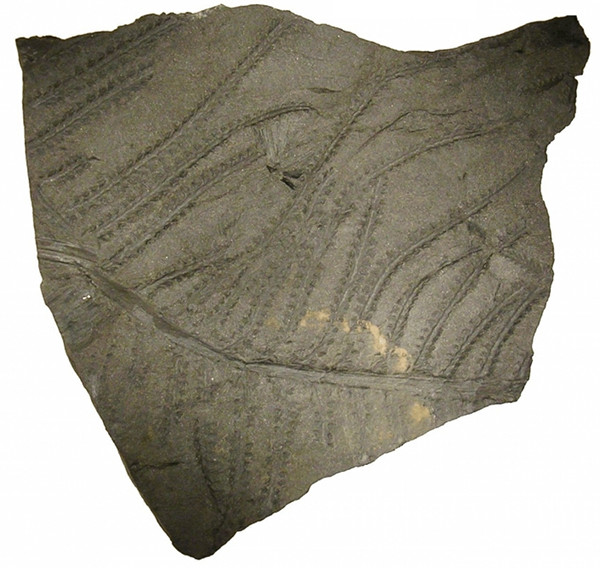
Alloiopteris, een genus dat ondergebracht wordt bij de Zygopteridales
Tijdens het Carboon ontwikkelden zich verschillende typen varens, waaronder ook de eerste boomvormige Marattiales (een orde van eusporangiate varens die nog hedendaagse representanten kent). Deze boomvarens konden tot wel 8 meter hoog worden. Structureel bewaarde stamdelen staan bekend onder de naam Psaronius en ook de complete plant wordt vaak zo genoemd. Bladafdrukken van Pecopteris, een type loof geassocieerd met Psaronius, zijn algemene fossielen uit het Boven Carboon. In gesteente van Carboonouderdom komen verder ook veelvuldig fossielen voor van kleinere, kruidachtige varens, vaak met sterk gelobde of diep ingesneden pinnules (blaadjes). De biologische affiniteit van dit soort varens, zoals Sphenopteris, Renaultia, Crossotheca en Zeilleria, is in veel gevallen (nog) niet precies bekend.
Pecopteris uit België (Foto T Wolterbeek)
De boomvormige Marattiales vormden ook in het vroege Perm een belangrijke component van de floras, zoals die van het Versteende Woud van Chemnitz (Duitsland). Dit Permwoud werd door een vulkaanuitbarsting met as bedekt, waardoor Psaronius stamdelen en ook de blaadjes (zgn. “Madesteine”) tot in prachtig detail bewaard zijn gebleven. In het Perm waren ook de koningsvarens (Osmundales, een van de oudste groepen leptosporangiate varens) goed vertegenwoordigd, met bijvoorbeeld Grammatopteris uit het Onder Perm van Duitsland en Brazilië, en Palaeosmunda uit het Boven Perm van Australië en Rusland. Deze grote verscheidenheid aan Osmundales suggereert dat deze groep reeds voor het Perm in ontwikkeling was. We kennen drie recente genera binnen de Osmundales, namelijk Osmunda (koningsvaren), Todea en Leptopteris.
Cladophlebis denticulata (Osmundales) Jura, Iran
Osmunda illiaensis (Osmundales) Mioceen, Oostenrijk
Veel van de hedendaagse varenfamilies ontwikkelden zich in de nasleep van de Perm-Trias extinctie. Het Trias zelf was grotendeels een periode van herstel, maar tegen het begin van de Midden Jura behoorden de meeste varens tot groepen die nu levende representanten kennen, zoals de Dipteridaceae, Matoniaceae en Cyatheaceae. Maar ook de Osmundales en Marratiales bleven goed vertegenwoordigd. Verder zien we in het Trias en Jura de eerste Dicksoniaceae (tot deze groep behoort de hedendaagse, prehistorisch uitziende boomvaren Dicksonia) en Schizaceae. In sommige gevallen vertonen de fossiele vormen zo veel gemeenschappelijke eigenschappen, dat ze niet alleen tot een hedendaagse familie, maar ook tot een hedendaags geslacht kunnen worden gerekend. Zo zijn er fossiele Osmunda en Marratia uit het Krijt tijdperk bekend.
Tempskya vormt hierop een uitzondering. Deze boomvaren uit het Onder Krijt van het noordelijk halfrond vormde een zogenaamde schijnstam. Deze schijnstam bestond, in tegenstelling tot de stammen van andere boomvarens (die een wortelmantel vormden), volledig uit verstrengelde stengels en luchtwortels. Het loof was klein en vormde geen kroon, zoals in moderne boomvarens, maar groeide over een groot gedeelte van de stam. We kennen Tempskya enkel van versteende stukken schijnstam; geblaaderte en voortplantingsstructuren zijn nooit als fossiel gevonden. De groeiwijze van Tempskya is echter zo uniek, dat deze varen een eigen familie, de Tempskyaceae, is toegewezen.
De tijd direct na de Krijt-Paleoceen extinctie vormde een (korte) bloeiperiode voor de varens. Gedurende de tien- tot honderdduizend jaar die het duurde voor de bloemplanten de klap te boven waren, werden de floras door varens gedomineerd. Veel van de meest moderne varenfamilies (bijv. de Polypodiaceae, op enkele Mesozoische records na) zijn in die periode en in het Paleoceen verder doorontwikkeld.
Foto's of locaties voor Sphenophyta bekijken
Foto's of locaties voor Overige Pteridophyta bekijken
Opmerking 1: Volgens de nieuwste inzichten, verkregen uit onder andere DNA-studies, behoren ook de paardenstaarten (bijv. Equisetum) tot de varenachtigen. Echter, omdat deze planten qua uiterlijk erg verschillen van de “typische varen”, worden ze in de Fossiel.net database ondergebracht onder de Sphenophyta, wat het determineren hopelijk vergemakkelijkt.
Opmerking 2: Bij het determineren van varenblad-achtige fossielen kan het nuttig zijn om ook de pagina van de Pteridospermophyta te raadplegen. Deze planten staan ook wel bekend als “zaadvarens”, omdat het gebladerte erg op dat van varens lijkt.
Met dank aan Tim Wolterbeek voor het schrijven van de tekst.
Feedback
Doneer
Wij zijn geheel afhankelijk van donaties. Daarom vragen wij onze gebruikers ons te helpen.

